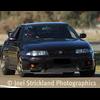Engine Monitor Version 2
Announcements
-
Similar Content
-
Latest Posts
-
That's strange , I'm still on there but not much gets posted on there .
-
By patrickxdf12 · Posted
Thanks for the reply. Yes the fork is preloaded. I also want to ask there is only one way for the throw out bearing to go on right? The flat side should go towards the gearbox. I am using an 18mm clutch release bearing sleeve. -
By Dose Pipe Sutututu · Posted
try use your phone to record it? might be an issue with the shutter speed / refresh vs. the timing light, but worth a shot -
I’m here solo don’t have any hands to help so haven’t hit it with a timing light
-
By Dose Pipe Sutututu · Posted
When you crank your car, and hit it with a timing light, can you see a steady crank timing?
-






Recommended Posts
Create an account or sign in to comment
You need to be a member in order to leave a comment
Create an account
Sign up for a new account in our community. It's easy!
Register a new accountSign in
Already have an account? Sign in here.
Sign In Now